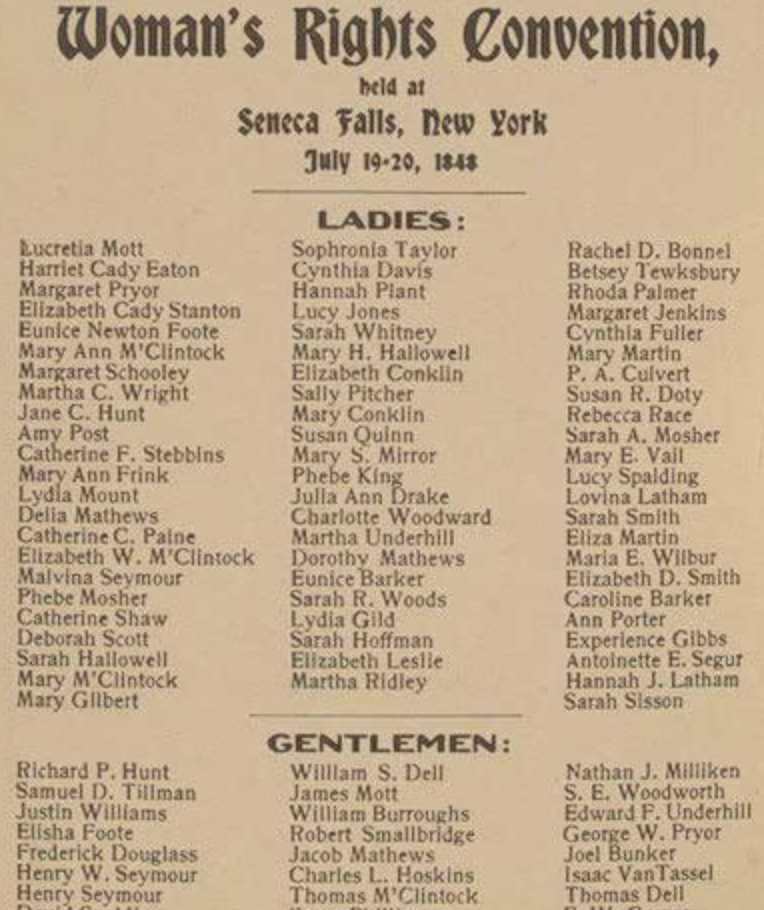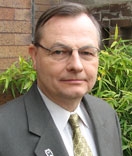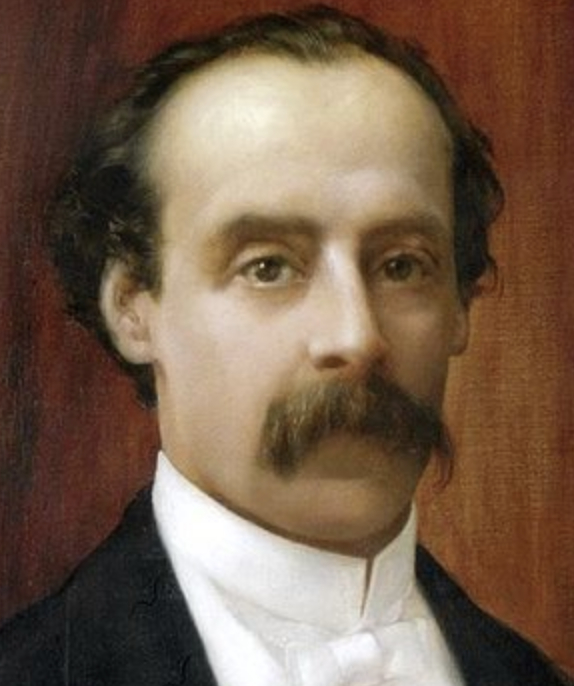July 19
Anniversary of Seneca Falls Convention

On this and the following date in 1848, the very first woman’s rights convention in the world met in Seneca Falls, N.Y. Feminist and freethinker Elizabeth Cady Stanton, with four friends, instigated and convened the Seneca Falls Convention on July 19-20, 1848. Stanton was among the first women to call for “woman suffrage” as part of the “Declaration of Rights and Sentiments” adopted at the convention. Stanton, initially warned that the suffrage plank was almost too shocking to utter and would alienate supporters, prevailed. The plank won endorsement and galvanized U.S. women for the next 72 years. The 19th Amendment, guaranteeing women’s right to vote, was finally passed in 1920, after nearly a century of struggle to overcome religion-rooted objections toward civil equality.
“In the early days of woman-suffrage agitation, I saw that the greatest obstacle we had to overcome was the Bible. It was hurled at us on every side.”
— Elizabeth Cady Stanton, interview with the Chicago Record (June 29, 1897)
Fred Edwords

On this date in 1948, humanist leader Fred Edwords was born in San Diego. He has dedicated his life to advocating for the atheist, agnostic, secular, humanist and freethinking communities. In the late 1960s he attended San Diego City College and the Bill Wade School of Radio and Television, going on to work as a radio newscaster and then as an underground filmmaker. Edwords directed the United Coalition of Reason, which was founded in 2009 and works to promote the community of reason and separation of church and state.
Edwords worked for the American Humanist Association for over 20 years, serving as executive director and then as editor of The Humanist, the organization’s magazine. He was president of Camp Quest, a children’s summer camp that promotes reason, critical thinking and other ideas embraced by the humanist and secular movements. The camp’s motto is, “Camp Quest. It’s beyond belief!” He and Mary Caroll Murchison married in 1980 and have two daughters.
PHOTO: American Humanist Association photo under CC 3.0.
“Much of human progress has been in defiance of religion or of the apparent natural order. The defiance of religious and secular authority has led to democracy, human rights, and the protection of the environment. Humanists make no apologies for this. Humanists twist no biblical doctrine to justify such actions.”
— Edwords, “What is Humanism?” (1989, retrieved from the American Humanist Association website)
José Manuel Balmaceda

On this date in 1840, José Manuel Emiliano Balmaceda Fernández, 11th president of the Republic of Chile, was born to wealthy parents in Bucalemu, the eldest of 12 children. He attended the School of the French Friars and considered joining the clergy during studies at the Santiago Seminary. In 1864 he became secretary to President Manuel Francisco Montt. He married Emilia de Toro Herrera in 1865. They had eight children, six of whom survived to adulthood.
In 1868 he co-founded the newspaper La Libertad, contributed to Revista de Santiago and published two monographs: “The political solution in electoral freedom” and “Church and State.” In 1869 he joined the Club de la Reforma, which became the political basis of the Liberal Party and whose members generally held anti-clerical views.
He was elected to the Chilean congress in the 1870s and in 1882, as minister of the interior during the presidency of Domingo Santa María, Balmaceda used his powers to enforce new civil marriage and divorce laws and other measures opposed by the Catholic Church. He served as president from 1886-91. Conservatives opposed many of Balmaceda’s policies and a constitutional crisis ensued over his ability to appoint Cabinet members of his choosing. Congress refused to fund the government. Civil war broke out after he illegally decreed that the 1890 budget would carry over into the next year.
By now he had lost any support he may have had from landowners and clergy. After his forces were defeated at the Battle of La Placilla and the rebel army approached Santiago, he took refuge in the Argentine legation, where he shot and killed himself at age 51. It was one day after the anniversary of his elevation to the presidency and the day when the term for which he had been elected president ended. (D. 1891)
“Clerical influence also turned against him as a result of his radically secular ideas about government.”
— Encyclopaedia Britannica, ed. Hugh Chisholm (1911)
